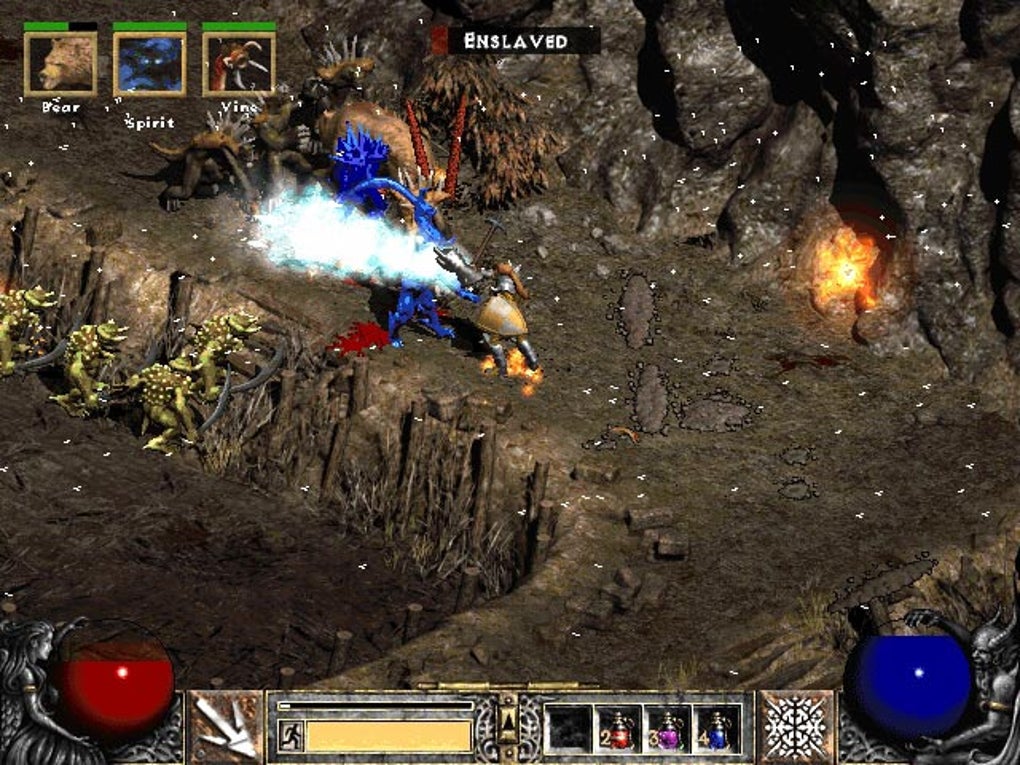
Does it offer radically different gameplay? No, of course not. In this way, Diablo felt more in common with a pen-and-paper game played with a few friends around the table than the majority of traditional computer RPGs.ĭiablo II is more of an enhancement than a new game, so those who sneered at Diablo for being too simplistic or repetitive will likely curl their lips once more. A rogue could protect a fighter from afar by slinging arrows, while the mage could conjure walls of fire or lightning bolts to wear down beasties attacking in groups. Up to four players could work together to defeat the mighty Diablo, which at its best, meant cooperation, teamwork and camaraderie.
Diablo 2 lord of destruction free download for windows 7 free#
The popularity of Diablo came from two areas: an array of unique items that could be found while dispatching the creatures and multiplayer support over the free service of. While magic spells and ranged weapons could also be used for strategy, the game never deviated too far from a hack-and-slash format. Controls were intentionally kept simple, boiling down to pointing at and then clicking on the monster to attack it. Reminiscent of the pen-and-paper Dungeons & Dragons, players could assume the identity of a hero and delve into caves, crypts, and even the bowels of hell itself gathering experience points from killing monsters and amassing wealth. Like one of the decaying zombies found within the depths of Diablo's dungeons, the RPG was all but dead in 1995 as first-person shooter and real-time strategy titles asserted themselves in the mindset of computer gamers.īlizzard changed this trend with a return to basics. What Diablo did for the industry was revitalize a dying genre - that of the role-playing game or RPG.

Not in terms of graphics, sound or even gameplay, the latter of which was essentially patterned after the coin-op classic Gauntlet. Socketed items can be modified permanently by adding magic gems to them, increasing their statistics or adding elemental properties.The original Diablo was a groundbreaking game. A new item type, socketed, has been added as well. Skills can be purchased several times to level them up, and some skills, when purchased, will increase the effectiveness of other skills. For example, a Paladin's skills allow him to cover allies with a protective aura, while a Sorceress can learn to fire lightning bolts and frozen blasts from her hands. Diablo's magic has been replaced with skills: class specific abilities that can be purchased with skill points as characters level up.

Much of the customization relies on equipment and item combinations.

The player character gains experience points from slaying monsters, and can be leveled up manually, increasing his or her primary attributes and acquiring abilities.

Unlike the previous game, the environments are not restricted to a single dungeon and include variously themed locations, each with its own town and quests. Much of the game takes place in randomized dungeon-like areas heavily populated by enemies. The player may choose between five available characters classes: Amazon (a rogue-like class with ranged attacks), Necromancer (can summon undead and inflict status ailments), Barbarian (a powerful melee fighter who can dual-wield weapons), Sorceress (offensive spellcaster), and Paladin (fights with shields and can cast support spells). Like its predecessor, Diablo II is an action role-playing game. A nameless adventurer visits the Rogue Encampment and decides to help its inhabitants by slaying monsters surrounding the area, and eventually pursuing the Dark Wanderer himself. He has turned into the Dark Wanderer, a mysterious being whose every step causes destruction and death. Diablo's essence corrupted him, gradually taking over his human nature. Knowing well that Diablo's spirit could never be truly destroyed, the hero of Tristram made the noblest sacrifice of all: he took the spirit of the Lord of Terror into himself, hoping that his strength of will could contain the demon within.


 0 kommentar(er)
0 kommentar(er)
